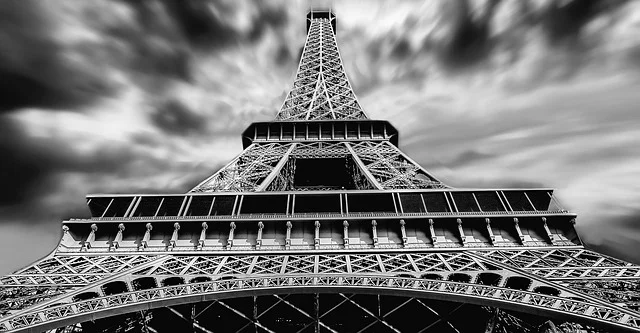The Eiffel Tower, or “La Dame de Fer” (the Iron Lady), is an iconic symbol of France and one of the most visited monuments worldwide. While its grandeur and history are well-known, there are numerous intriguing facts about this architectural marvel that often go unnoticed.
This article delves into some of these fascinating details, providing a fresh perspective on the Eiffel Tower.
The History Behind Its Design
The Eiffel Tower owes its existence to a design competition for the 1889 Exposition Universelle, held to celebrate the 100th anniversary of the French Revolution. Gustave Eiffel’s company, although not the initial favorite, won the competition with an audacious iron lattice design. Interestingly, the design wasn’t warmly received by everyone. Many prominent Parisians initially criticized it, calling it an eyesore and even petitioning against its construction. Today, it’s hard to imagine Paris without its iconic tower.
The Eiffel Tower During Construction
The construction of the Eiffel Tower was a remarkable feat. It took just over two years, from 1887 to 1889, with around 300 workers involved. Despite the scale of the project and the time period, only one worker lost his life during construction – a testament to the safety measures in place. Another intriguing fact is that approximately 18,000 individual iron pieces were used, all of which were precisely cut before being brought to the site.
The Eiffel Tower’s Role in World Wars
The Eiffel Tower played a significant role during both World Wars. During World War I, it served as a radio transmission tower, intercepting enemy messages and aiding in the capture of the infamous spy Mata Hari. In World War II, when Paris was under German occupation, Hitler ordered the destruction of the Eiffel Tower. However, the command was never carried out, thanks to General Dietrich von Choltitz’s defiance, who couldn’t bear to destroy such an architectural masterpiece.
The Eiffel Tower and Science
One of the lesser-known aspects of the Eiffel Tower is its contribution to science. Gustave Eiffel himself used the tower for numerous experiments. He installed a weather station on the tower’s top, which is still operational today. The tower also played a crucial role in early radio communication experiments. Even in modern times, it continues to serve as a broadcast tower.
Modern-Day Eiffel Tower: Facts and Figures
In the present day, the Eiffel Tower continues to fascinate with its impressive facts and figures. It welcomes nearly seven million visitors each year, making it the most visited paid monument in the world. Despite being made of iron, it’s surprisingly light and weighs less than the air that surrounds it. The tower also grows and shrinks with temperature changes – it can be up to 15 cm taller on a hot day! Regular maintenance is crucial for the tower’s preservation, with 60 tons of paint applied every seven years to prevent rust.
The Eiffel Tower in numbers:
- Height: Standing at approximately 330 meters (1,083 feet) tall, the Eiffel Tower was the world’s tallest man-made structure until the completion of the Chrysler Building in New York in 1930.
- Weight: It weighs about 10,100 tons.
- Steps: There are 1,665 steps leading to the top, but visitors can only climb by foot to the second floor. The rest of the journey must be made by elevator.
- Visitors: The Eiffel Tower attracts nearly 7 million visitors a year, making it the most visited paid monument in the world.
- Lights: The Eiffel Tower sparkles every night, thanks to 20,000 light bulbs that twinkle for five minutes every hour on the hour once the sun sets.
- Paint: It is repainted every seven years, requiring approximately 60 metric tons of paint.
- Wind Resistance: The Eiffel Tower was designed to withstand wind speeds of up to 240 km/h.
- Elevator Travel: The elevators travel a combined distance of over 100,000 km a year – equivalent to two and a half times around the Earth.
Conclusion
The Eiffel Tower, with its rich history and remarkable features, is more than just a breathtaking monument. Its intriguing facts, from its controversial inception to its role in wars and science, make it a fascinating subject of study. As it continues to stand tall against the Parisian skyline, the Eiffel Tower remains a testament to human ingenuity and a source of endless fascination. So, the next time you visit this iconic monument, remember these interesting facts and appreciate the Eiffel Tower in a new light.





